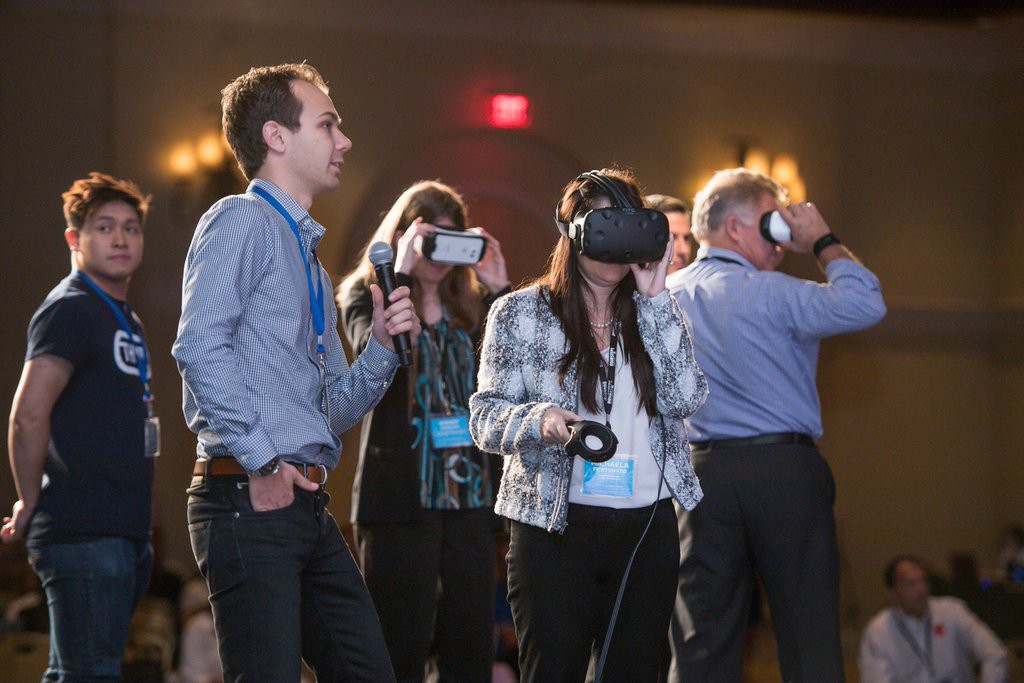By Leah Etling on May 4, 2016 in News
Huntington Beach, Calif. — With the multifamily industry still enjoying rising rents and high occupancy rates in most markets, it’s no wonder this year’s Apartment Internet Marketing Conference had an air of successful complacency, as most apartment marketers have been enjoying smooth sailing lately.

That doesn’t mean there isn’t room for improvement, and several hundred industry insiders gathered in Southern California May 2-4 to dig into the trendiest best practices for multifamily marketing.
Here are a few key takeaways from the event:
Smart apartments: still simmering
Despite growing chatter about smart home technology, the sector hasn’t optimized for multifamily yet, but stay tuned, because development for the market is hot.
“You don’t want to take something that’s created for single family homes and apply it to a 800 unit apartment complex … it won’t scale,” said Felicite Moorman, CEO of StratIS, a tech company focused on access, energy, and automation.
Multifamily owners and managers were urged to focus on useful innovations first, before offering fancy bells and whistles that might impress prospects and residents. ROI is still a challenge, a smart home technology panel concluded.
Clay Hicks, president of apartment management at Dinerstein Companies, said his firm sees an average of $45 more in monthly rent for “smart” apartments in Texas, and $60 more in California. Meanwhile, average spending for tech-forward amenities has dropped from $2500 per unit to $1500.
The incredible shrinking garage
The eco-conscious transit marketplace and the apartment industry have yet to intersect in a way that’s financially rewarding for either, but one thing is clear: apartment garages are getting smaller and will keep shrinking.
Millennials are eschewing the personal vehicle as a transit method—in fact, 25 percent of them do not have driver’s licenses. Their dependence on apartments for housing means multifamily will see an impact.
“What’s really going to go away is the garage itself,” said Manny Gonzalez, managing principal of KTGY Architecture and Planning. “We may have once built that garage with 2.5 spaces per unit, but before long I think we’ll be down to 1 space per unit, and then one half.”
Electric vehicle charging stations, which have popped up at many trendy new communities as green-oriented amenities, haven’t been overwhelmed by resident use. Bozzuto Director of Sustainability Peter Zadoretzky said many sit empty at the company’s East Coast communities. However, a simpler fix, big screen TV’s with transit schedules placed in Bozzuto lobbies, has been wildly popular.
Building communities with fewer parking spaces creates considerable value for Bozzuto as a developer, Zadoretzky said. “For us, it costs $35,000 to $50,000 per parking space in our new projects. To recoup that, we would have to be charging $300 per month per space.”
Airbnb: Still an option
If you thought the final answer to Airbnb’s efforts to play nice with multifamily was “never going to happen, don’t ask again,” a panel at Tuesday’s AIM Conference was an eye-opener.
JaJa Jackson, head of multifamily partnerships for the popular home-sharing website, made this bold prediction: in the next 24-36 months, he speculated, 50 percent of multifamily housing providers will decide how to allow regulated home-sharing in their apartment communities.
Airbnb is currently piloting partnerships with multifamily providers in certain urban markets, in an effort to see how owners, residents, short-term subletters and other vested parties can harmonize.
Driving the continued conversation around the sharing economy is the realization of many property owners that they could have increased opportunities to bring in revenue from Airbnb-like activity, whether it’s from renting temporarily vacant units or allowing renters to list their units while they travel.
“Many of the brands we spoke to are very focused on developing community at their properties, and they’re also focused on millennials,” Jackson said. “They’re thinking a lot about long term relationships, and building a feeling that their community is a place where everyone can thrive.”
For property owners, hurdles about security and accountability may remain. But the conversation is far from over. Other sharing economy opportunities, like renting out parking spaces short term, are also on the table.
“The No. 1 way you can champion revenue growth opportunities is to understand what’s wrong with them and then figure out how to address those concerns of the management team,” Jackson said.
Virtual Reality meets apartment marketing
A popular session presented on Tuesday morning included the presentation of new technology that literally enhances reality.
Matt Bell, co-founder and chief strategy officer of Matterport, showed off his company’s technology, which creates 3-D models of apartments or homes after photographing them with a special camera.
“3-D is uniquely powerful to be able to communicate a sense of place online,” said Bell, adding that it improves viewer engagement by three to six times. “We find that this accelerates the decision-making process.”
For communities still in development, viewing 3-D models with virtual reality goggles can put a prospective buyer inside their new home or apartment, even if ground hasn’t been broken yet.
The Shipyard San Francisco, a master-planned mixed use community currently under construction, used it as once piece of a major marketing blitz for 12,000 homes. Powerful videos, cohesive branding, live events and a distinct sense of lifestyle are all part of the campaign.
“This is just one tool that we’re using, but it’s one that makes everyone go ‘Wow,'” said Sheryl McKibben, Chief Marketing Officer for Lennar Urban, SF Shipyard’s developer. “We were able to sell units without it, but now that we have it, it makes the process that much quicker.”
As the AIM audience watched, volunteers donned Oculus Rift goggles to take a “tour” of a prospective home. On a jumbo screen, the living areas of the residence felt touchable, down to views of the ocean out the windows and clothes hanging in the master bedroom closet.


